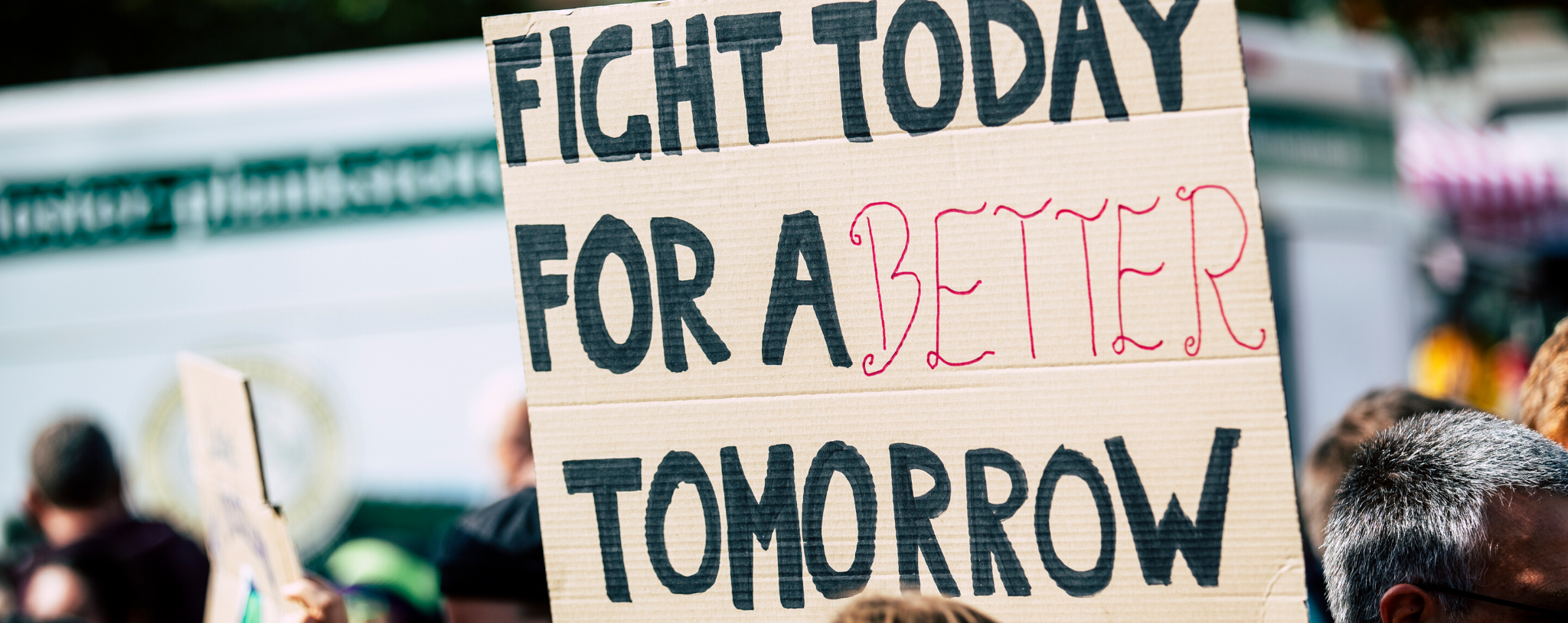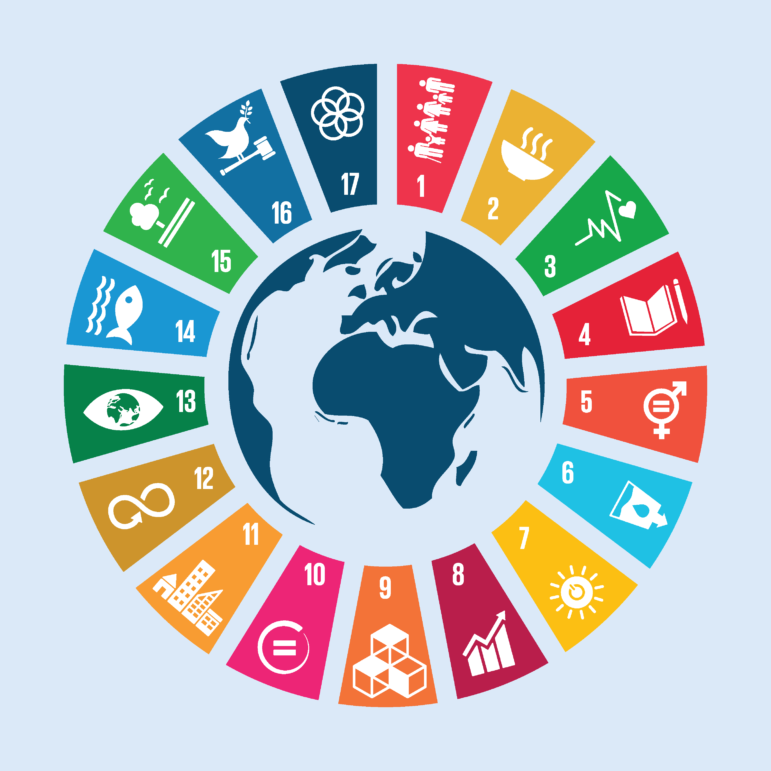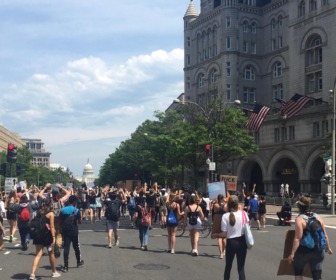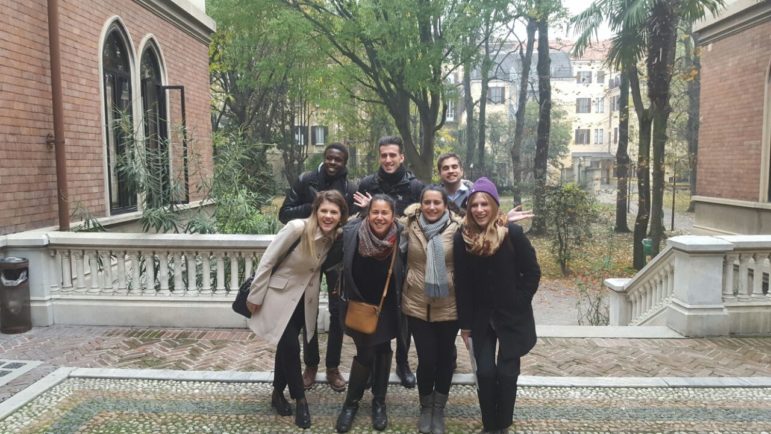
We’ve received pushback for supporting Black Lives Matter and voting issues being “out of our lane.” Here’s our response.
By Courtney Dyson

When it comes to fighting the climate crisis, there is not one designated lane, climate activism is the spanse of the entire highway. Or, to put it in millennial terms, climate change being a singular issue is as far from the truth as me being a Slytherin (yes, I went there and yes, I am struggling with “she who must not be named”). So, why is it then that climate activists are often told to “stay in your lane” when we use our platform to support other causes like racial justice?
Over the past few months, this has become more evident as climate organizations across the country (including yours truly) have received pushback for taking stances in support of the Black Lives Matter movement and Defund Police. Groups across the country have been told, “stay in your lane, “stop being political,” “you’re a climate group, focus on that,” and so on. I don’t agree with this mentality. And I’m not alone. The United Nations would agree!
I’d like to show you just how intricately entwined climate change is with other realms of activism and development by taking a close look at the United Nations 17 Sustainable Development Goals.
It was the year 2016…
I was pursuing my master’s degree in International Cooperation and Development at Università Cattolica del Sacro Cuore in Milan (unsurprisingly substantially more affordable than a master’s in the United States, and I was working as an Au pair for three young Italian boys). I remember sitting in an ornately decorated classroom with twenty-foot ceilings in a historic Italian villa turned university, learning about the Goals along with my 23 classmates from 17 countries and 5 continents. The entire program was built around the 17 Goals and as my fellow students and I sat listening to professors tell tales about their experiences, something struck me as odd – we never specifically focused on Goal 13: Climate Action. And while every single Goal is important, in my mind, none was as important as 13.

I realized very quickly that the consequences of climate change are so far reaching, that they impact every single one of the other Goals. That if we did not achieve Goal 13, all other goals would be in jeopardy: food security, health, economy and jobs, global security, and of course environment and biodiversity. Climate change overlaps with them all, every single goal, every single lane.
This post would be excessively long if I dug into all 17 Goals, so I will bypass the obvious ones: Affordable and Clean Energy; Decent Work and Economic Growth; Sustainable Cities and Communities; Life Below Water; and Life on Land. I will instead focus on three that are indisputably linked and relevant to some of the societal challenges we are facing today in the United States: Zero Hunger; Good Health and Well Being; and Peace, Justice and Strong Institutions.
Climate Activism is Activism to End Global Hunger
Goal #2: End hunger, achieve food security and improved nutrition, and to promote sustainable agriculture.

The climate connections here are pretty straightforward and I actually focused my studies on the climate impacts on food security and adaptive agriculture. The rapidly changing climate has a direct impact on agriculture and access to healthy and nutritious foods. Over the past decade we have seen the consequences of rising temperatures, changing precipitation patterns, increased frequency of extreme events, and the broadening of desertification.
“Each degree-Celsius increase in global mean temperature would, on average, reduce global yields of wheat by 6 percent, rice by 3.2 percent, maize by 7.4 percent, and soybean by 3.1 percent.”
If serious measures are not taken to mitigate climate change and adapt agriculture practices, staple crops will become harder and more expensive to grow, and even less nutritious, placing millions at risk of malnutrition. We will also see an increase in food deserts. Food deserts are areas with no access to a store with fresh and nutritious food options within a certain radius. In 2010, an estimated 23.5 million people in the United States lived in food deserts, more than half of whom live in low-income households – It will be interesting to see what the 2020 census shows.
What are climate activists taking action for? To reimagine the current food system, which is responsible for 21–37 percent of total greenhouse gas emissions, and to make it “climate friendly.” To maintain a stable climate and increase access to healthy food. For there to be less food deserts. To avoid a global hunger crisis.
Climate Activism is Activism for Health Rights
Goal #3: Ensure healthy lives and promote well-being for all at all ages.
Today, less than half the global population is covered by essential health services and 27 million Americans lack health insurance in 2020, with millions more at risk of losing it as the Affordable Care Act is currently under attack. This should be a huge warning flag for us all and is especially poignant as we are in the midst of a global pandemic.
The most severe consequences of climate change will directly impact health and well-being. Annoyed with the recent uptick in your seasonal allergies? That is just the beginning and minor compared to clean air, safe drinking water, heat exposure, sufficient food, and secure shelter.
“Between 2030 and 2050, climate change is expected to cause approximately 250,000 additional deaths per year, from malnutrition, malaria, diarrhea and heat stress.”
How are climate activists, activists for health and well being? We are working to lower global temperature rise to lessen the severity of the related health consequences. We are working to stop new fossil fuel infrastructure and to shutter existing ones. And we know the necessity of and advocate for access to affordable health care for everyone.
Climate Activism is Activism for Equal Rights
Goal #16: Promote peaceful and inclusive societies for sustainable development, provide access to justice for all and build effective, accountable and inclusive institutions at all levels.
One only has to look at the recent move by the Trump Administration to “revise” NEPA to see the direct injustices that oil and gas companies have been committing for almost a century. The  policy has been instrumental in communities having a say in what projects are built in their communities and has been fundamental in many pipeline lawsuits (read more on this).
policy has been instrumental in communities having a say in what projects are built in their communities and has been fundamental in many pipeline lawsuits (read more on this).
Environmental degradation and the forces that have led to the climate crisis have disproportionately taken advantage of and impacted marginalized communities for over a century. Sacrificing these communities air, water, and health for profit. In the mid 2000’s approximately 68% of African Americans lived within 30 miles of coal-fired power plants. And while coal plants have been shutting down across the country in recent years, the health consequences will linger for generations and other fossil fuel infrastructure is trying to sneak in.
Likewise, the consequences of climate change will not be borne fairly, with communities of color being disproportionately impacted.
“Weather patterns caused by climate change disproportionately affect African Americans and other communities of color in the United States — which is a particularly bitter irony, given that the average African American household emits 20 percent less CO2 per year than the average white American household.”
And this is not only an American problem, it is a global one.
“Sadly, the people at greater risk from climate hazards are the poor, the vulnerable and the marginalized who, in many cases, have been excluded from socioeconomic progress” – United Nations Secretary-General Ban Ki-moon
Climate activists are speaking up with communities to stop further fossil fuel development (see our current work on the Header Injustice Project). Climate activists are part of a movement to reduce the energy burden of low-income households and improve energy efficiency. Climate justice, environmental justice, racial justice, LGBTQ justice, intergenerational justice – they are interconnected. Because we are working together towards an equitable society, just climate solutions, and the transition from an extractive society to a regenerative one.
The failure to make progress on this goal is evident today and speaks directly to the global movement we are seeing – Black Lives Matter. For more on this, check out Emily Frias’s post “Why Climate Activists Need to Be Anti-Racist Activists.”
It’s Not Just Climate Activists
All of this is not solely true for climate activists. We are all working together, crossing into one another’s lanes, and heading in the same direction. Equal rights activists are climate activists. Healthcare activists are climate activists. Activists to end poverty are climate activists. We are working toward a common goal. Toward a society that values life over profit, equality over power, community over individualism, and the planet over consumerism. We are all one moving piece of a larger movement. Put simply, ‘we will not stay in our lane.”
P.S. I’m a Gryffindor.

Additional Resources:
- Special Report on Climate Change and Land, Chapter 5: Food Security. IPCC.
- The Harsh Reality of Food Deserts in America. Move for Hunger. 06/08/2017.
- How climate change threatens public health. Yale Climate Connections. 08/19/2019.
- Climate Change & Conflict. Environmental Justice Initiative.
- Climate Justice. UN Sustainable Development Goals.
- Energy Justice in Virginia. Chesapeake Climate Action Network.
- Climate change in the US will hurt poor people the most, according to a bombshell federal report. CNBC. 11/26/2018.
- Report: Inequalities exacerbate climate impacts on poor. UN Sustainable Development Goals.
- Climate change is also a racial justice problem. Washington Post. 06/29/2020
